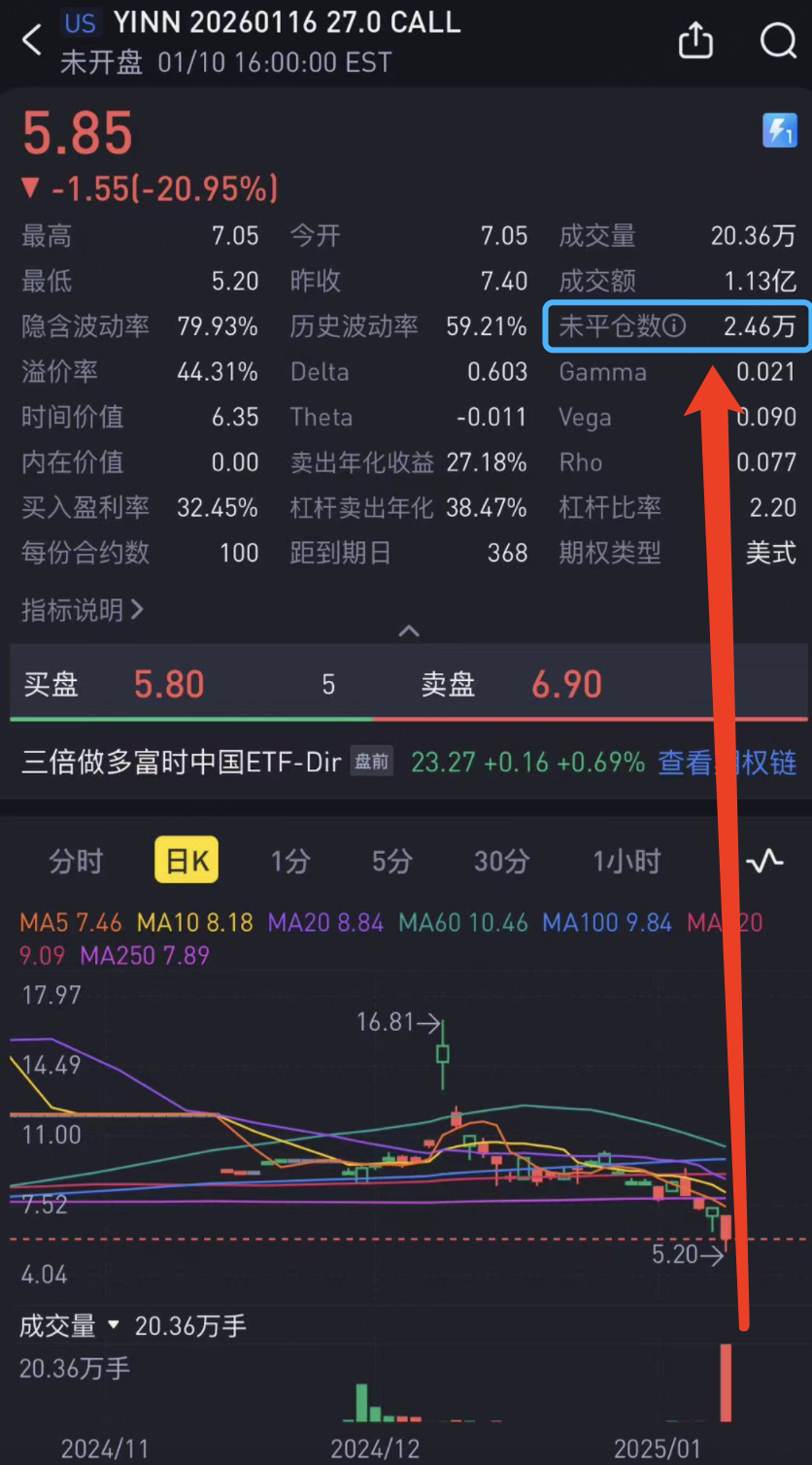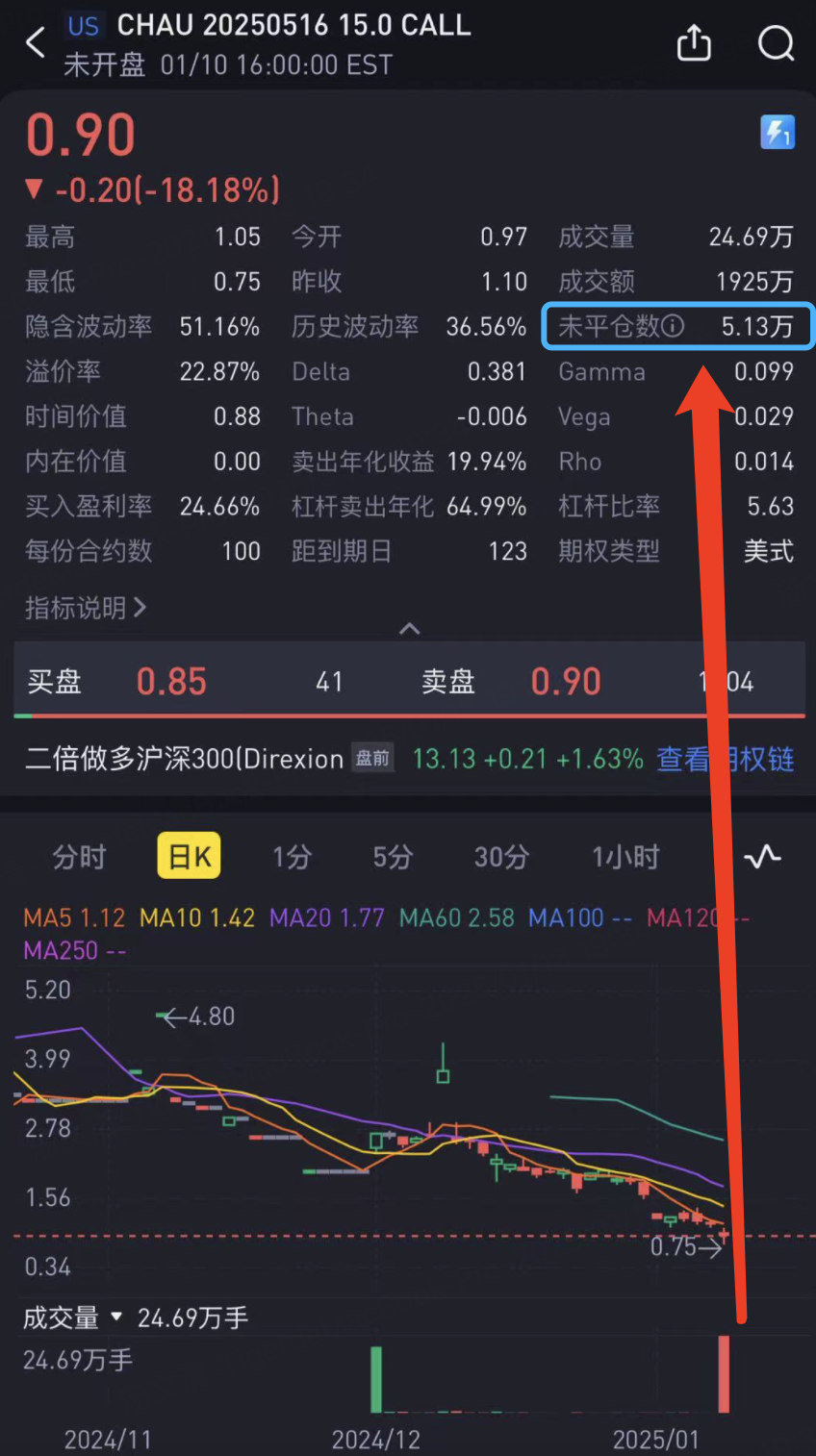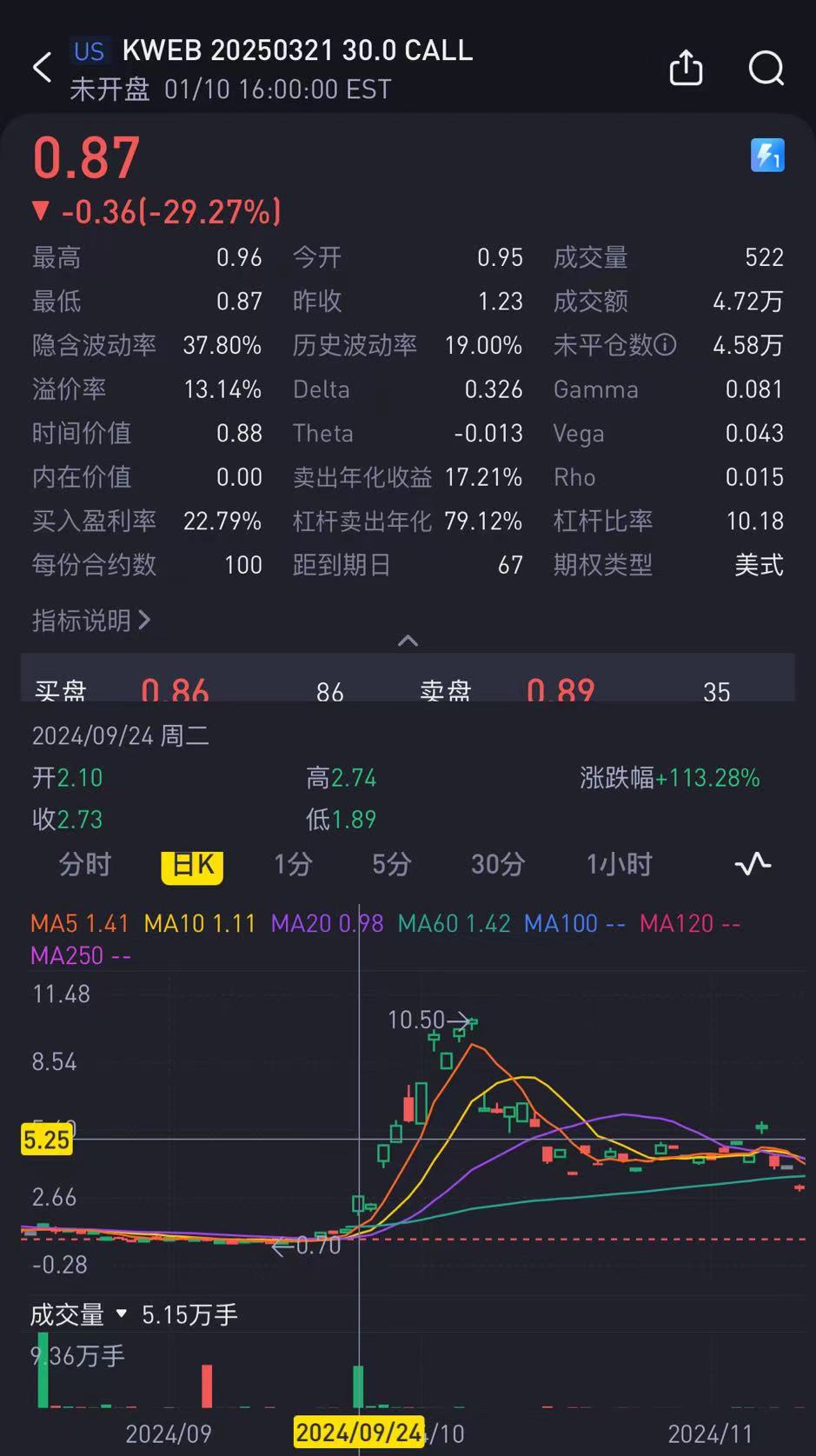Open Interest Data Update: Chinese Stock Options See Large Orders Exit, Market Makers Profit Another
In December, we summarized the bullish positioning in Chinese stocks, with two large orders particularly noteworthy: 98,000 contracts of $YINN 20260116 27.0 CALL$ traded in one day, and 210,000 contracts of $CHAU 20250516 15.0 CALL$ .
These two large orders were positioned just before the December 9th surge, becoming highly visible in the market, with various media speculating about the source of the funds. After a month of volatility, on January 10th evening, Yinn plunged 8.69% and CHAU dropped 4.44%, finally forcing these large positions to close at a loss.
According to Monday's updated open interest data, $YINN 20260116 27.0 CALL$ open interest dropped to just 24,600 contracts from the previous 184,700.
$CHAU 20250516 15.0 CALL$ open interest fell to 51,300 contracts from the previous 217,900.
This massive change in open interest indicates these large positions were closed on Friday.
Do large positions close just because of significant drawdowns?
These two large positions closed after drawdowns of 40% and 66%.
The YINN 27 calls were opened at an average price of 9.3 and closed at 5.4, resulting in losses of about $38 million for 98,000 contracts, or roughly $60 million for 160,000 contracts.
The CHAU 15 calls were opened at an average of 2.6 and closed around 0.8, resulting in losses of nearly $30 million for 160,000 contracts.
Combined, market makers profited about $100 million!
We shouldn't mystify large orders - they often close due to drawdowns, and their timing isn't always precise.
For example, the large position in $KWEB 20250321 30.0 CALL$ with 93,600 contracts couldn't withstand September's pullback, closing half at lows and the remainder on September 24th.
The position exited around 2.5, while these calls later reached 10.5. However, few could have predicted A-shares would reach 3,674 within two weeks.
Does the exit of large positions signal an imminent crash?
First, let's characterize these positions: $YINN 20260116 27.0 CALL$ and $CHAU 20250516 15.0 CALL$ were undoubtedly straight bullish calls, neither hedges nor deceptive plays. I've seen many non-options traders in non-financial communities questioning these positions' nature, believing capital is omnipotent and losses must be intentional.
That's not the case - losses are just losses. Regular readers of my articles have seen plenty, including last week's wealthy investor getting burned.
Does the bulls' full exit indicate Chinese stocks will collapse?
Analyzing this requires understanding trading styles, which is difficult with one-time large orders. Sequential large orders are easier to interpret, like the Tesla 380 calls $TSLA 20250221 380.0 CALL$ position closure we observed on December 27th, which typically signals strong bearish sentiment.
For leveraged speculative positions like YINN and CHAU, I would have previously advised immediate retreat following large position exits. But years of observation have made me a seasoned investor, and now I'd say let's wait and see.
It feels like Wall Street particularly enjoys targeting confident leveraged positions.
This isn't a bottom-calling suggestion - we can watch for free and see just how ruthless market makers can be.
Finally, Pelosi's strategy of buying deep-in-the-money long-dated options shows remarkable foresight. You might laugh at Pelosi's lack of delta understanding, but Pelosi laughs at your lack of Wall Street understanding.
Disclaimer: Investing carries risk. This is not financial advice. The above content should not be regarded as an offer, recommendation, or solicitation on acquiring or disposing of any financial products, any associated discussions, comments, or posts by author or other users should not be considered as such either. It is solely for general information purpose only, which does not consider your own investment objectives, financial situations or needs. TTM assumes no responsibility or warranty for the accuracy and completeness of the information, investors should do their own research and may seek professional advice before investing.




